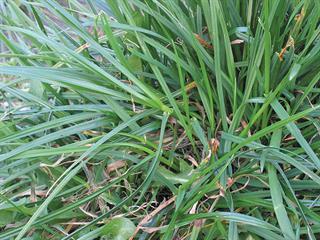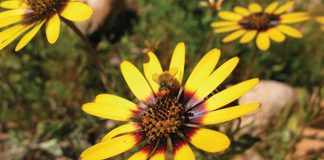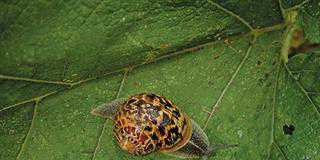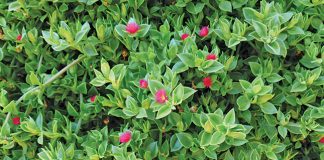
The ryegrass plant comprises up to 25 individual stems called tillers. Each tiller has its own leaves and root system and can survive independently from the parent plant. If the tillers stop producing new leaves, the pasture is no longer growing. Each tiller maintains a maximum of three actively growing leaves developing from the growth point at the base of the stem. The youngest, fastest-growing leaf (leaf 1) appears at the top of the stem, while leaf 3 is the oldest and will be next to die if a new leaf starts at the growth point.
Ryegrass should be grazed at this three-leaf stage. The reason is that when a ryegrass plant is grazed, the roots stop growing. Plant energy reserves stored in the stubble and roots go to the new emerging leaf after grazing. If this leaf does not expand quickly and start to photosynthesise, the plant will die.
If, however, the first leaf reaches maturity, it produces the energy needed to renew the plant’s reserves. The roots start growing again and the plant continues to grow until it has three fully-grown leaves, at which stage it also has maximum energy production and energy storage. The plant is now ready to be grazed again. The time it takes for each leaf to emerge depends on the soil temperature. The size of the leaves depends on the availability of soil nutrients and water.
More tillers per plant
Research has shown that ryegrass plants that have been grazed at the three-leaf stage have more tillers per plant, more roots per plant, improved plant survival over summer, and less weed and kikuyu invasion. These factors contribute to a more persistent and productive ryegrass stand.
- A farmer has control over three crucial aspects:
- Grazing interval (when to graze);
- Grazing intensity (how hard to graze); and
- Grazing duration (how long to graze).
As mentioned, it is important to allow grazing when the pastures are at the three-leaf stage of regrowth. This period may vary from three to six weeks as the leaf appearance rate is determined by soil temperature. The only time the pasture should be grazed more frequently is when more than 30% of the leaves become affected with rust disease, when the plant grows too tall because of too much nitrogen-fertiliser, or when the plants shade each other because the stand is too dense.
Grazing too frequently slowly drains the plant’s stored reserves and it takes longer and longer for the plant to regrow after each grazing. An average grazing interval of 28 days at an Outeniqua experimental farm resulted in a perennial ryegrass/clover pasture still going strong in its fourth year.
Grazing intensity
Low-intensity grazing (undergrazing) is the main cause of the overshadowing of pastures and must be avoided at all costs.
Sunlight is needed to trigger the growth points of parent ryegrass tillers so that they produce new daughter tillers. If the growth points are overshadowed by ungrazed plant material, new tillers cannot form. This has a negative effect on the persistence and yield of the pasture. The main reason for undergrazing is too much pasture being allocated per grazing period.
Grazing hard
The ideal grazing height is 5cm. However, it is important to graze ‘hard’ enough so that no plant material is left behind to overshadow the ryegrass growing points. If residual material build-up cannot be prevented, the most economical way to get rid of it is to use low- productive or dry cows as followers to the main herd to graze the pasture down to the required 5cm.
Slashing residual plant material is expensive and should only be a last option. If the correct grazing interval is used, a high intensity of grazing will not deplete the plant’s energy reserves.
Duration of grazing
Cows usually receive a new block after each milking. If this is not possible, use a grazing duration of two days at most.
Regrazing of emerging leaves depletes stored reserves in the plant. A back fence can be used to prevent this.
Management factors such as seedbed preparation, irrigation and soil fertility are all important to ensure that perennial ryegrass survives and delivers high yield and quality. But above all, a farmer should ensure that the pasture is not grazed too frequently.
Source: Infopak by PR Botha, Elsenburg/South Coast ADC.













